Rusutsu (留寿都村) is just a small village located in Abuta District, Shiribeshi, Hokkaido. What make Rusutsu popular is for its Ski Resort. As another places in Hokkaido who has a beautiful scenery, Rusutsu ski resort is located 90 minutes by road from Sapporo's International Airport and one hour from Niseko.
Rusutsu Ski Resort is Hokkaido's largest Ski area in the winter. The area also has an amusement park or golf field to play golf during the summer.
From the top of Mt Isola you can see Lake Toya with the Pacific Ocean in the distance. Rusutsu is a family-friendly resort offering superb ski terrain and excellent facilities.
A large hotel complex sits at the center of the resort, consisting of the highrise Rusutsu Tower, the North and South Wings, the Highland Lodge and several trailside log cabins. A monorail connects the buildings with each other. A few independently run pensions can also be found in the nearby town center of Rusutsu.
Besides skiing, Rusutsu Resort offers numerous other attractions, including restaurants and shops, pool facilities and hot spring baths, as well as places catering to foreigners such as the Cricket Pub sports bar. Summer activities include golf and an amusement park with over 60 attractions and 8 roller coasters.
Rusutsu has 3 main mountains - East, West and Mt Isola. They offer amazing variety and some awesome natural terrain features not found in other resorts. The backcountry is superb, with just a 20 minute hike you can access long steep chutes or a myriad of tree runs. There's also night skiing till 8pm. Add to this one of the best half-pipes and snow-parks in the area and you have a resort which offers everything that the other resorts offer without having to share.
The famous hotel is Rusutsu Resort Hotel. The Hotel offers 761 rooms and resort-scale facilities on top, including dozens of shops and restaurants. Alternatively, you have the option of staying in log cabins, imported from Canada, using timber first imported from Finland.
Rusutsu Ski Resort Photos :
Rusutsu
Rusutsu Map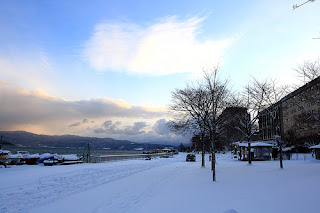
Rusutsu is located close to Lake Toya (Toyako) and is just on the other side of Mount Yotei from Niseko.
Rusutsu Resort hotel. Located at the base of the West Mountain the Rusutsu Resort Hotel offers ski in/ski out luxury accommodation.
Rusutsu Tower

Rusutsu West Mountain seen from East Mountain
Rusutsu Ski
Watch Rusutsu Resort Hotel Video here
Meet Japanese Girls here!
Kamis, 09 Desember 2010
Rusutsu Ski Resort at Hokkaido
Diposting oleh
worldchi
di
20.10
0
komentar
![]()
Label: Rusutsu
Jumat, 05 November 2010
Sounkyo Hot Spring and Waterfalls at Hokkaido
Sounkyo (層雲峡) is a hot spring located in Daisetsuzan National Park, Kamikawa, Hokkaido, Japan. it is one of the best hot spring resorts in central Hokkaido visited by 3 million people every year. It is located halfway up the Sounkyo, a mountain with precipitous cliffs continuing for 24 kilometers, and offers visitors breathtaking scenic attractions such as dynamic columnar joints and famous waterfalls including Ginga-no-taki and Ryusei-no-taki.
Sounkyo Gorge is situated at the foot of Mt. Daisetsu-zan, which is called the "roof of Hokkaido." The giant gorge, bordered by 100-meter-high cliffs formed by the erosion of tuff, stretches for 24 kilometers and forms the center of Daisetsu-zan National Park. The hot spring area boasts of magnificent scenery and plentiful natural hot water, and attracts three million visitors a year.
The gorge contains lots of waterfalls, of which the Ryusei-no-taki Falls (shooting star falls) and Ginga-no-taki Falls (Milky Way falls) are especially worth seeing. At both of these waterfalls, the water falls directly over the cliff, giving them a sense of great power. The Obako and Kobako rock formations are said to be the most beautiful places in the gorge. Obako features wide rock faces that resemble 'byobu' (folding screens), while Kobako has many fantastic crags. You can rent bicycles there.
If you change from the Daisetsu-zan Soun-kyo Ropeway to the Kuro-dake Lift, you can climb to a height of 1,700 meters and enjoy a magnificent view of Mt. Daisetsu-zan. The Soun-kyo-onsen Hot Spring is in the middle of the gorge, and is full of modern hotels. In summer the Soun-kyo Hi-matsuri (fire festival) takes place in the gorge, while in mid-winter there is the Hyobaku-matsuri Festival (ice waterfall festival).
Every year from the end of January to March, the Hyobaku Matsuri (Frozen Falls Festival) is held where ice pillars and domes placed along the Ishikari River are illuminated in many colors, enveloping the entire area in a magical atmosphere.
Sounkyo Hot Spring
Sounkyo Hotspring Kurodake No Yu
There are so many hot spring places in Sounkyo, as well as the Ryokan. Ryokan is Japanese style inns found throughout the country, especially in hot spring resorts
Sounkyo Hot Spring or Sounkyo Onsen. The famous Hot Spring is Kurodake-no-Yu (黒岳の湯). Kurodake no Yu is a public bath house, located in the town center, it offers indoor and outdoor baths with limited views of the surrounding landscape.
Sounkyo Tourism
Like another parts in Hokkaido, Sounkyo offers a beautiful natural scenery like gorges, waterfalls, and rock formations (obako). Sounkyo Onsen is known and named after the nearby gorge, which runs for 24 kilometers along the Ishikari River and features some pretty waterfalls and interesting lava formations.
Down in the valley, three kilometers from Sounkyo, there are two beautiful waterfalls, Ginga no Taki and Ryusei no Taki, which can be viewed from a large parking lot or from a small observation deck reached via a steep walking trail in about 15-20 minutes from the parking lot. Another five kilometers up the valley is the Obako rock formation.
Tourist attractions at Sounkyo :
1. Ginga no Taki (銀河の滝 waterfall of the galaxy), is a series of thin, silvery rivulets cascading down the mountainside.
Sounkyo Waterfall Ginga no Taki
2. Ryusei no Taki (流星の滝 waterfall of the falling star), is a powerful fall seemingly bursting out of solid rock.
Sounkyo Waterfall Ryusei no Taki
3. The Daisetsuzan Sōunkyō Kurodake Ropeway is on the slope of the gorge, and tourists can get the ropeway and chairlift to climb the mountain.
4. The Sōunkyō Visitor Center is near the resorts and houses picture panels displaying the scenes of Sōunkyō and guides for visitors.
5. Yuyurin Nature Trail. 
Sounkyo Yururin Nature Trail
This trail is a barrier-free sloped wooden path that can be easily navigated by wheelchairs. The car park is made of tree bark, so your shoes will not get muddy on wet days.
6. Asahiyama Zoo. Japan’s popular northernmost zoo
Sounkyo Festival :
1. Sounkyo Hyoubaku Matsuri (Ice Waterfall Festival)
Sounkyo Hyoubaku Matsuri
Ten thousand square meters of river flatlands by the Ishikari River are utilized to display this pageant of ice pillars, ice tunnels, ice domes, etc. The main lookout tower reaches 15 meters, and the view from it at night is mysterious indeed. Saturdays and Sundays have a fireworks display to light up the winter night.
2. Sounkyo Hana Monogatari
Sounkyo Hana Monogatari
This is the first time in Hokkaido where a spa area has coordinated its gardening at the administrative level. We have done things like make large flower beds in public spaces, put up planters and flower baskets in shops and hotels, and coodinated other flower arrangements and themes for the whole Sounkyo region.
How to get Sounkyo :
From Tokyo:
1h 35 min from Haneda to Asahikawa Airport.
From Osaka:
2h from Kansai International Airport to Asahikawa Airport.
From Sapporo:
1h 25 min to Asahikawa Station by JR Hakodate Line (limited express), and 1h 50 min from Asahikawa Station to Soun Gorge by JR bus.
Sounkyo Photos : 
Sounkyo Kurodake Ropeaway
Sounkyo Hot Spring
Sounkyo Hot Spring
Sounkyo Rock Formation Obako
Watch Daisetsuzan Sounkyo Kurodake Ropeway Video here
The Daisetsuzan Sōunkyō Kurodake Ropeway is a Japanese aerial lift line in Kamikawa, Hokkaidō, operated by Rinyū Kankō.
Diposting oleh
worldchi
di
21.54
0
komentar
![]()
Label: Sounkyo
Kamis, 07 Oktober 2010
Scuba diving at Izu Peninsula Japan
Boring with culture and historical sites from Japan ? Try heading underwater. Japan may be not the best diving in the Asia like in Thailand or Maldives. But don't forget Japan is a country full of island, a narrow archipelago with 34,000 kilometers of coastline and more than 2,000 diving points.
Saying diving in Japan, this place should be the best : Izu Peninsula. Izu Peninsula is the best choice for diving in Japan, as well as Ogasawara Islands, Hokkaido and Northern Japan, and Okinawa.
Izu Peninsula (伊豆半島 - Izu Hanto) located in Shizuoka Prefecture, is only an hour by train from central Tokyo. It includes both Japan's first dive spot - Izu Oceanic Park, on the east coast - and the best on the main island of Honshu - Osezaki, on the west coast.
How to get Izu Peninsula
The shinkansen links Tokyo to Atami in about 50min (around ¥3,600). Regular trains make the trip in about 1h40min and cost ¥1,890.
Several train lines (Shinkansen, JR Superview, JR Ito, Izu Kyuko...) link Izu's towns. As times and fares depend on the line and connections, you had better check Yahoo Transit or Ekitan from our Transportation in Japan page for exact fares and timetables.
Izu Peninsula main attractions :
1. Atami 熱海市
Atami is a city located in the eastern end of Shizuoka, Japan. Atami is a hot spring city with shinkansen station at the entrance to the Izu Peninsula. While the city is attractively located on the steep slopes along the ocean coast, it has obviously suffered from the economic downturn of the 1990s.
2. Ito 伊東市
Ito is a city located on the eastern shore of the Izu Peninsula in Shizuoka, Japan. Ito is another hot spring city along the peninsula's eastern coast, only about 15 kilometers south of Atami. Inside Ito's municipal limits lies Izu Kogen, a pleasant resort town with more hot springs and the nearby scenic Jogasaki coast.
3. Shimoda 下田.
Probably the most pleasant town to stay in the peninsula, Shimoda is also the most interesting historically. The Shimoda Hot Spring is the collective name of the hot springs (Rendaiji, Kawachi, Shirahama, and Kannon Hot Springs) in Shimoda City, the closest resort area from the heart of Tokyo located in the southeastern port town of the Izu Peninsula.
This is where Commodore Perry and his Black Ships first came to Japan to negotiate the country opening of its port to US ships. In 1854, the the Shogunate and the US signed a Treaty of peace and amity, which effectively ended Japan's 250 years of self-imposed isolation.
Consequently, Shimoda was, along with Hakodate, the first port open to Western ships. The first American consul, Harris Townsend, established his consulate in Shimoda in 1856.
Best Time to Visit Izu Peninsula
Diving at Izu is done year-round, but conditions are highly variable. In summer and early autumn, water temperature may reach the low 80s, underwater visibility is typically 15 to 30 feet and popular dive sites can be extremely crowded. In winter, water temperature may drop to the mid-50s, visibility increases to 40 to 80 feet (even more at offshore islands), but the weather can be less reliable. Dry suits are highly recommended for winter diving at Izu.
Izu Peninsula Scuba Diving info :
- Mar Scuba Tokyo; Phone: +81 (0)90 3851 3901; Email: matt@marscuba.com; Website: http://www.marscuba.com Mar Scuba Tokyo is the longest-running English dive operator in the Tokyo area and offers fun dives and courses at various locations throughout the Izu Peninsula.
- Japan Underwater Explorers; Email: info@jue.jp; Website: http://www.jue.jp J.U.E. is a recreational and technical dive club/service offering multi-lingual training and fun dive adventures. Japan's premier GUE training service.
Izu Peninsula websites :
www.town.oshima.tokyo.jp
www.tokyo-islands.com
Izu Peninsula Photos : 
Located South-West of Tokyo and right South of Mount Fuji, the Izu Peninsula faces the Pacific ocean and is part of the Fuji-Hakone-Izu National Park.




Shimoda Hot Spring. The Shimoda Hot Spring is the collective name of the hot springs (Rendaiji, Kawachi, Shirahama, and Kannon Hot Springs) in Shimoda City.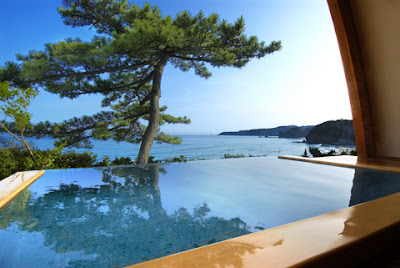
Shimoda Yamatokan. Luxury Spa Vacations in the Izu Peninsula - Shimoda Yamatokan & Seizan Yamato Japanese-style Inns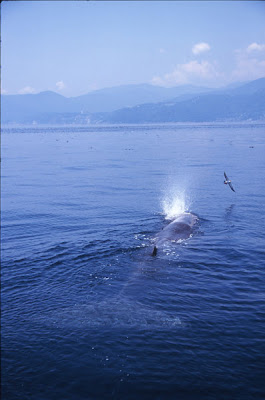
Whale as seen at Izu Peninsula
Watch Izu Peninsula view by train video here
Diposting oleh
worldchi
di
21.39
0
komentar
![]()
Label: Izu Peninsula
Selasa, 14 September 2010
Toyohashi Japan Motor Company Port City
Toyohashi (豊橋市) is a Japan city located in Aichi Prefecture in Honshu Island. Actually, Toyohashi is the center point between Tokyo and Osaka. Toyohashi is famous for its Autmobile Company as The Toyota Motor Company has its productiion facility in the nearby city of Tahara. Toyohashi, formerly called Yoshida, is 70 km south east of Nagoya.
Toyohashi has an important rail hub connecting Aichi, Nagano and Shizuoka Prefectures. With a population about 380.000, Toyohashi is Japan largest port for the export/import of motor vechiles.
Toyohashi Tourism
Toyohashi is a small city, therefore not so many things to see there. Many visitors are more attracted to visit Tokyo, Nagoya, or Osaka.
But nowadays, the popularity of Toyohashi is increasing a lot. The most famous sites including Yoshida Castle, Toyohashi Zoo and Botanical Gardens , and Toyohashi Museum of Natural History.
Many of Toyohashi's places of interest are located near to to Shiyakushomae (City Hall) - a short streetcar ride from Toyohashi Station.
The striking 1930s Romanesque-style Public Hall has become a symbol of the city and is built in an unusual fashion for a civic building in Japan.
The nearby Haristos Orthodox Church (built in 1913) also deserves a mention and it is possible to view the church's impressive icons inside the building. There are also both Catholic and Anglican churches located close to the City Hall.
From there it is a short walk to the pleasant Toyohashi Park and Yoshida Castle on the banks of the Toyokawa River.
Yoshida Castle was first built in 1505 by Makino Kohaku, but all that remains is a corner keep that was restored in 1954. The castle was taken over by the feudal lord Ikeda Terumasu in 1590, who began a grandiose rebuilding scheme, but the castle was never completed. The keep is free to enter and there are good views out over the Toyokawa River. The grounds of the park were used as an Imperial Army barracks during the Meiji period and a Meiji-era sentry box and gate are evidence of that period. Toyohashi Park is also a favored cherry blossom viewing spot in season.
Also in the park are the Sannomaru Kaikan - a tea room for performing the tea ceremony and the Toyohashi City Art Museum, which has exhibits of local history and more modern temporary art exhibitions.
It's possible to walk on the southern banks of the Toyokawa River even as far as the Toyokawa Bridge about 4km in all and then across the bridge to the Maeshiba Tomyodai (Tomeidai) - one of Japan's oldest wooden lighthouses. On the way is Minatomachi Koen, with the pleasant nearby shrine Minatoshinmeisha Shrine.
Another historical building in Toyohashi well worth seeing is the Edo Period Futagawa-juku. This large inn or honjin on the Tokaiko highway was built for lords and high-ranking officials traveling along the route between Kyoto and Edo (modern-day Tokyo). The building has been restored and its possible to visit the garden and rooms where the rich and powerful of the day would stay. There is an adjacent museum with exhibits on the history of the Tokaido.
Tel: 0532 41 8580
The nearest station is Futagawa on the JR Tokaido Main Line.
Across the Toyokawa River are the much older Urigo Ruins where there is a reconstruction of a Yayoi Period (300 BCE - 300 CE) "dug-out" style dwelling.
Toyohashi Museum of Natural History
The Toyohashi Museum of Natural History opened in 1988 to commemorate the 80th anniversary of the establishment of the Toyohashi municipal government.
It was established under the themes of evolution and natural history.
The museum aims to promote better understanding of nature and life by broadening knowledge and deepening familiarity with nature.
Yoshida Castle
Yoshida Castle was originally built by the order of a feudal lord, Kohaku Makino in 1505 under the name of Imahashi Castle. It was occupied by many feudal lords in the Warring States period. The castle name was changed later to Yoshida Castle and Terumasa Ikeda occupied the castle after Hideyoshi Toyotomi had control over all Japan. The castle itself was changed from a middle age castle to a modern castle. Currently, the ruins of the turret remain in the north side of the park near the Toyogawa River. People may see the old image of the castle in the reproduced turret iron tower and engraved rock walls. A Green tea ceremony is served in a standing manner at Sannomaru Kaikan located at the ruins of the Sannomaru Enclosure. Many large old trees are preserved in Toyohashi Park where Yoshida Castle is located, and the park is loved by the citizens as an oasis of nature where you can see wild birds even though it is located in the town area.
Photos of Toyohashi tourism :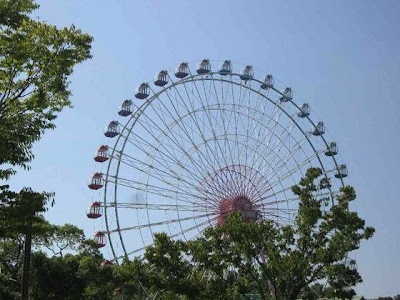
Amusement Park Area in Toyohashi Zoo and Botanical Park. An amusement park area with a roller-coaster, a ferris wheel, 50 meters high, a merry-go-round and even shooting coaster ride.
Toyohashi Museum of Natural History. The Toyohashi Museum of Natural History opened in 1988 to commemorate the 80th anniversary of the establishment of the Toyohashi municipal government.
Toyohashi Downton
Toyohashi Station
Toyohashi Yoshida Castle
Toyohashi Nikko Hotel
Watch Toyohashi Station Video here
Diposting oleh
worldchi
di
07.51
0
komentar
![]()
Label: Toyohashi
Sabtu, 07 Agustus 2010
Airasia X flight Kuala Lumpur to Tokyo for 14.000 Yen


Good news for Japan lovers, especially who residents at South East Asia. The low cost airlines from Malaysia, Airasia, will serve the flight between Kuala Lumpur to Tokyo Haneda airport by the end of 2010. This news is just like dreams comes true for ASEAN visitor, and many passengers will like Airasia as the company will sell one-way tickets between Kuala Lumpur and Tokyo for as low as 14,000 yen.
Operated by AirAsia X, AirAsia's long-distance airline, the flights between Kuala Lumpur International Airport and Tokyo's Haneda airport will begin at a pace of three per week. The flights are expected to use Airbus SAS' A330 aircraft. The Japanese government has already allotted landing and takeoff slots to AirAsia X at Haneda.
The flight will arrive at Tokyo Haneda Airport, and not Narita Airport. Haneda airport is about 14 km (8.7 mi) south of Tokyo Station.
Airasia seems to be more focus with internation flight between South East Asia and East Asia. Recently, Airasia X also launched the new route between Kuala Lumpur to Seoul.
At present, the cheapest round-trip airfares for Japan-Malaysia flights sell for more than 40,000 yen. Saying that the one-way fare for its flights will likely cost less than a cab ride from Tokyo to Narita International Airport, Fernandes expressed his confidence in the service's success.
Diposting oleh
worldchi
di
00.14
0
komentar
![]()
Label: Tokyo
Selasa, 06 Juli 2010
Tokachigawa Hot Spring Onsen in Hokkaido
Japan is very famous for its hot spring or Onsen. One of the most popular hotspring in Japan is The Tokachigawa hot spring (十勝川温泉), especially in Hokkaido Island. The Tokachigawa Hot Spring is located quite close to Obihiro's urban district and gushes out along the Tokachi River.
Besides Tokachigawa, another hot spring in Hokkaido are Noboribetsu, Yunokawa, Akanko, Kawayu, Utoro, Abashiri, Sounkyo, Asahidake, Jozankei, Asarigawa, Lake Toya.
Tokachigawa Onsen is the best-known and most popular lowland resort in Tokachi. It is located in Otofuke, about 10 kilometres from the centre of Obihiro city, on the north (left) bank of the Tokachi River (Tokachigawa).
Tokachigawa Onsen is a hot spring with mōru baths. The brown-coloured water contains traces of organic material from peat bogs. (The word mōru is a loan word from the German (das Moor) for bog.) Most hotels and inns allow the general public to use their baths.
What’s a “moor hot spring”?
Tokachigawa hot spring is on the Tokachi River in Otofuke Town, in the middle of the Tokachi Plains. The hot spring gushes up through a lignite layer composed of the remnants of reeds and other wild plants that have accumulated over the ages. The moor vegetation makes the water rich in organic components. The waters are milder and richer in natural moisturizers than ordinary hot springs, smoothening and moisturizing the skin and making Tokachigawa hot spring famous as a “hot spring for beauty.”
Tokachigawa Sightseeing
Tokachigawa is not only providing hot springs, but also we can enjoy a natural splendor that’s unique to Hokkaido. Some of Tokachigawa sightseeing such as :
1. Tokachigaoka Park
This park features a vast lawn and fun wooden playground equipment. At its center is a huge flower clock called “Hanack.” Its face is 18 m in diameter, and its second hand is 10.10 m long. For souvenirs and delicious soft-serve ice cream, come to the Welcome Hanack concession stand.
The outdoor cooking area and multipurpose square make this a park that embodies Tokachi’s distinctive magnificence.
2. Tokachigaoka Scenic Viewpoint
This overlook is just up the hill from Tokachigaoka Park. It commands a view of the eternally flowing Tokachi River, the Tokachi hot spring resort, the vast Tokachi Plain, and the faraway Hidaka Mountains. It’s an ideal spot to enjoy lovely sunsets.
3. Swan Viewing Area
4. Footbath
5. Tokachi Farm
6. Row of White Birches
7. Sunflower Fields
8. Ryugetsu Sweetopia Garden
Obihiro and Tokachi are known for confectionery, and Ryugetsu exemplifies the best in the sweets of these areas.
9. Suzuran Park
In early June, pretty lilies of the valley bloom in clusters in this park.
Wild birds, Hokkaido squirrels and other animals live here, and the park is a celebrated cherry-blossom-viewing spot, bustling with visitors every spring.
10. Tokachi Ecology Park
Tokachi Ecology Park was established as a park for environmental education at the Tokachigawa hot spring resort, where forests meet rivers.
Tokachigawa Onsen Daiichi Hotel
Tokachigawa Onsen Daiichi Hotel. Address : 12-1, Minami, Tokachigawa-onsen, Otofuke-cho, Katou-gun, Hokkaido 080-0263, Japan
There are a lot of hotels that provide hot springs in Tokachigawa, one of the best is Tokachigawa Onsen Daiichi Hotel.
Located along the river of Tokachigawa. In front of the hotel, you can enjoy glorious view of Tokachi's nature. Tokachi Hot spring water will make your skin more beautiful, because it contains plenty of natural moisturizing factor. To offer safety food, we are particular about ingredients, which grown up in Hokkaido and Tokachi. We are proud of our speciality and to make you satisfy. Please enjoy Tokachi by delicious meals and Hot springs.
Why choose Tokachigawa Onsen Daiichi Hotel
1. The hotel is embraced by moor springs, one of Hokkaido's heritages, and the great wilderness of Tokachi
The Tokachi region shines with abundant sunshine and rich soil. The Tokachi River nourishes the fertile soil of Tokachi. The gently flowing Tokachi River creates majestic scenery with the backdrop of the Hidaka and Taisetsu mountain ranges. The scenery of Tokachi is deeply embedded in people's minds.
2. Hoshu-tei Traditional Japanese-style Building
Hoshu-tei is a traditional Japanese-style building. The nostalgic fragrance of tatami mats creates a calm, placid atmosphere that fills the building. The beauty of Japan that has been cherished by the Japanese is available here.
Relax physically and mentally in a Japanese atmosphere. Traditional Japanese-style interior with tatami mats and fusuma doors (thick paper sliding doors) that create the placid atmosphere of old Japan. A guestroom with private outdoor bath available only in Hoshu-tei.
Tokachigawa Onsen Daiichi Hotel Address :
Hoshu-Tei, a traditional Japanese building, and Toyo-Tei, a modern Japanese building
12 Minami, Tokachigawa Onsen, Otofuke-cho, Hokkaido, Japan 080-0263
Tel: +81-155-46-2231
Fax: +81-155-46-2238
Photos of Tokachigawa and Tokachi River sightseeing :
Tokachi Ecology Park was established as a park for environmental education at the Tokachigawa hot spring resort, where forests meet rivers.
Tokachi Nature Center. Enjoy the natural grandeur of Tokachi from riding a canoe, hot-air balloon and even paragliding. Experienced instructors show you how. It’s not every day you have a chance to try these thrilling outdoor sports.
Hot Air Ballooning at Ohibiro City. See a vast panorama from 30m (100 feet) in the air: the Tokachi Plains, Tokachi River, the Hidaka mountains and more!
Whooper Swans, Tokachi River, Hokkaido, Japan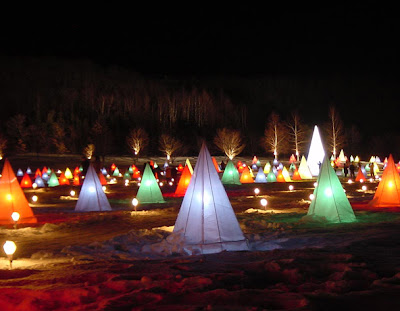
Tokachigawa Hot Spring. This hot springs gushes forth from the ground on the left bank of the Tokachi River in the town of Otofuke, situated in the center of the Tokachi Plain.
Watch Tokachigawa Swan Festival "Sairinka" video
Diposting oleh
worldchi
di
21.36
0
komentar
![]()
Label: Ohibiro, Tokachigawa
Rabu, 23 Juni 2010
Nagano Yatsugatake Mountains and Royal Hotel
The Yatsugatake Mountains (八ヶ岳) is one of Japan famous mountains located between Nagano Prefecture and Yamanashi Prefecture on the island of Honshū in Japan. Yatsugatake literally means eight mountains. Actually there are more than eight peaks. Japanese word “hachi” (eight) sometimes implies “many”.
Yatsugatake is one of Japan most visited mountains besides the trademark Mount Fuji and Tateyama which famous for its ski resort.
The Mt. Yatsugatake mountain range with its main peak Mt. Akadake (2,899m) and the 3,000m Southern Alps with the lofty Mt. Kitadake (3,192.6m) make a magnificent, powerful mountain view. The Mt. Yatsugatake area is one of stunning nature that changes in various ways throughout the seasons and is a symbol of Japan’s highland resorts.
Eight mountains in Mt. Yatsugatake have generally pointed out Mt. Aka (2899m), Mt. Gongen (2715m), Nishitake (2398m), and Mt. Amigasa (2524m) of Mt. Tengu (2646m), Mt. Ioh (2760m), Yokodake (2829m), Mt. Amida (2805m), and a dominant peak. As it seems that the portion to Mt. Tateshina located further here north is also contained when it becomes the Mt. Yatsugatake mountain range.
Kiyosato Highland stretches out across the foot of Mt. Yatsugatake, whose peaks range from an altitude of 800m to 1,500m. There are retreats, the best known being Seisen Ryo, hotels, pensions, art museums, restaurants, and at the night you can gaze out at the night sky full of stars – a sight not seen in urban areas.
How to access Mount Yatsugatake
It takes approximately 2 hours from Shinjuku Station in Tokyo to JR Kobuchizawa Station by train (JR Chuo Line), approximately 2 hours by car to Nagasaka I.C. on the Chuo Expressway, or around 2 hours 30 minutes by Chuo Highway Bus from Shinjuku Station West Exit.
It takes approximately 50 minutes by car or around 1 hour by train from the Mt. Yatsugatake area to the Kofu area.
From the Mt. Yatsugatake area to the Isawa area it takes 1 hour 10 minutes by car or 1 hour 15 minutes by train (Fuji Kyuko Line from Otsuki Station (JR Chuo Line)).
To the Fujikawaguchiko area it takes approximately 1 hour 40 minutes by car or 1 hour 50 minutes by train on the Fuji Kyuko Line from Otsuki Station (JR Chuo Line).
Yatsugatake-Chushin-Kogen Quasi-National Park
This wide park that spans both Yamanashi and Nagano prefectures boasts lakes, white birch trees and alpine plants, all encompassing the Yatsugatake peaks at its center. Kiyosato and other highlands, with their pastoral scenery reminiscent of European landscapes, capture the hearts of their many visitors. Stand at the top of 5,059 ft high Utsukushi-Mori, turn 360 degrees, and take in an incredible view including Mt. Fuji, the Minami Alps and Oku-chichibu.
One of top attractions in Yatsugatake-Chushin-Kogen Quasi National Park is Lake Shirakaba-ko. Lake Shirakaba-ko is an artificial lake that is up to 9 meters deep, and 1,416 meters above sea level. It is located at the western foot of Mt. Tateshina-yama in the northern part of Chino City, Nagano Prefecture, and belongs to Yatsugatake Chushin Kogen Quasi-National Park. Visitors can cruise the lake between Mt. Kuruma-yama and Mt. Tateshina-yama by tour boats or pedal boats. You can also enjoy cycling around the roads along the lakeside, and there are camping grounds and ice skating rinks in the vicinity.
Resort Outlets Yatsugatake
Visit Yatsugatake is not only a mountain views matter, but we can also make a shopping. Yatsugatake is also famous for its shopping mall. Resort Outlets Yatsugatake is a shopping mall surrounded by huge mountains and in harmony with nature.
The vast complex is divided into seven areas and all courts have stunning views of Mt.Yatsugatake and The Southern Alps.
There is a large variety of shops such as those selling designer goods, sports and outdoor goods, everyday items, and there are also restaurants. The mall offers stylish fashion and provides a quality shopping space.
Yatsugatake Royal Hotel
One of the most famous hotel in Mount Yatsugatake is Royal Hotel. Yatsugatake Royal Hotel attracts around 20,000 guests each year. The ideal location offers a wonderful view of Japanese major mountains such as Mt Fuji and Yatsugatake, and night-time star watching at the observatory. With a hot spring resort in the facilites, this is one of the leading resort hotels in the prefecture.
It takes 15 minutes on foot or 3 minutes by taxi from Kai-oizumi Station on JR Koumi Line, which runs from Obuchizawa Station on Chuo Line connecting Shinjuku of Tokyo in 120 minutes. The Kiyosato Village, one of the famous resorts, is 15 minutes by car.
Yatsugatake Mountain Photos
Snow at Yatsugatake Mountain
Yatsugatake Peak
Resort Outlets Yatsugatake is a shopping mall surrounded by huge mountains and in harmony with nature.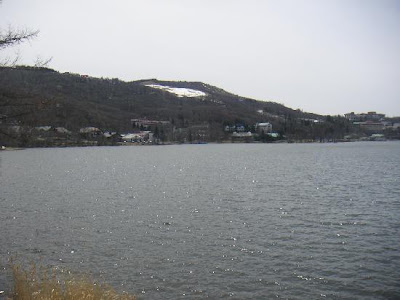
Lake Shirakaba-ko Yatsugatake is an artificial lake that is up to 9 meters deep, and 1,416 meters above sea level.
Yatsugatake Royal Hotel. Three minutes by hotel shuttle bus from Kaioizumi Station of JR Koumi Line (Reservation necessary)
20 minutes by the car or taxi from Kobuchizawa station of JR Chuo Honsen line
Yatsugatake Station Map. By train : 15-minute by taxi from JR Chuo Main Line Chino station. By car : 10-minute from Chuo Express way Suwa-minamiIC
Yatsugatake-Chushin-Kogen Quasi-National Park
At the top of Yatsugatake-Akadake Climbed through the West Wall Mt. Fuji is seen on the left
Watch Climbing at Sansa Hou Runze, Yatsugatake video here
A very cold ascent of the Sansa Hou Runze route on Yatsugatake on the 20th January 2008.
(Climbers - Alan Tomlinson, Rod Szasz, Tony Grant, Dave Puglisi)
Diposting oleh
worldchi
di
00.03
0
komentar
![]()
Label: Nagano, Yatsugatake











































.jpg)


.jpg)








